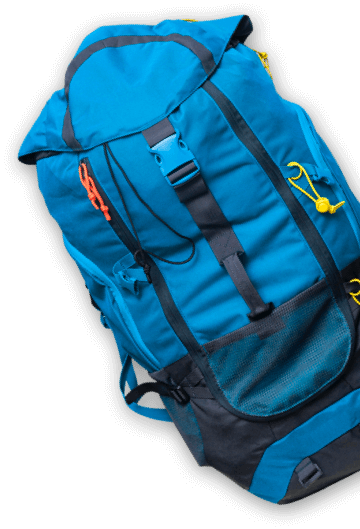03 Aug 20
What hiking boots should I buy and how do I look after them?
Top 10 Essential Tips from RAW Travel’s qualified mountain leaders.
1. Buy the right style of boots for you
But which ones are the right ones? Let’s start with the musts. They must be waterproof and they must have a good sole with good grip. We recommend Vibram and Contagrip. Whether to go for full leather boots or lighter-weight fabric and Goretex is up to you – it’s purely a matter of personal choice and what else you might use them for. For example, we wouldn’t choose heavy leather boots if we were planning a trek in a very hot country or going on a long backpacking trip; however, they would be perfect for a more technical route where crampons might be required, or for trekking in a colder/snowy country, or for snowshoeing.
2. Choose boots that are the right length for your feet
There are many good makes of hiking boots. Finding the right make and model comes down to the fit on your foot. In an ideal world, you’d find a pair of boots that give you about 1cm or one thumb width (whichever is greater) between your toes and the front of the boot, and they would fit everywhere else (the heel, width and so on) perfectly. Unfortunately, humans don’t have identikit feet, so this rarely happens. The golden rule is to never try to accommodate another part of your foot (narrow heels, slim ankles, etc) by going a size smaller and pushing your toes too close to the front of the boot. Why? Because you cannot change the fact that a boot is too small. Your toes will be in agony squeezed up against the boot.
3. Prioritise toe room when buying boots
Of course, ideally, you should try on several different makes and find the one that suits your feet perfectly. If your boots have too much volume around the heel and/or ball of the foot, experiment with heel gel pads and/or insoles to take up the volume. This is also recommended if you’ve already bought a pair of boots and are finding they have a little too much room around the ankles or balls of your feet.
4. Try the boots going uphill and downhill
This means outdoors (if at all possible) or at least on a proper boot-trying ramp with an uneven surface. Any good outdoor retailer should provide one of these. Going up and down the stairs simply isn’t sufficient.
5. Wear the same socks you prefer to wear for hiking
There are all sorts of opinions on socks, so you need to decide what works for you and stick to it. Take your own socks with you. Don’t rely on the testing socks in the shop: they usually bear no resemblance to the socks you’d wear on a trek.
6. Ask the shop assistant to explain the lacing system
This is really important. If they don’t have a clue, take a friend who is a regular hiker with you or shop elsewhere.
Okay, so you’ve found a great new pair of boots you’re really happy with – now what?
7. Look after them!
Fabric boots usually need gentle scrubbing. Never use detergent, only tepid water or very mild soap flakes; detergent can ruin your waterproofing and is very difficult to rinse off. Then they will need respraying or recoating with Goretex-suitable waterproofing, at least once a year and maybe two to three times a year if you use them a lot. Leather boots need slightly more work – continual applications of a suitable leather/nubuck cream or wax after every few hikes. They also need treating after you get them out of the cupboard if you haven’t used them in a while (and ideally before you put them in the cupboard, too).
8. If you get soaked, dry your boots slowly and carefully
Never apply too much direct heat – don’t put boots on radiators or too close to roaring fires. Be very careful with hot-air blowers designed for ski-boots – don’t have them on too high a setting and don’t leave your boots on them for more than a couple of hours. It is better both for the longevity of your boot and the state of your feet to dry them slowly, even if it means they aren’t 100% dry the next day. If you blast them with heat you will end up with hard crinkly boots that no longer fit your feet properly.
9. Store your boots if you aren’t using them regularly
Bear in mind that storage itself can age and damage boots. Don’t just assume you can take your old favourites out of the cupboard and wear them on a trek without checking them over. In the case of leather boots, they will need a pre-use treatment with suitable wax or cream. For all boots (especially if you live in a hot humid zone) check that the sole isn’t becoming detached from the upper.
10. Check the grip on the soles of your boots
Regardless of the state of the uppers, if you have worn the soles down to the point where there is little grip, you either need them re-soling (proper Vibram or similar, no compromises) or you need new boots.
Good luck and happy walking!

